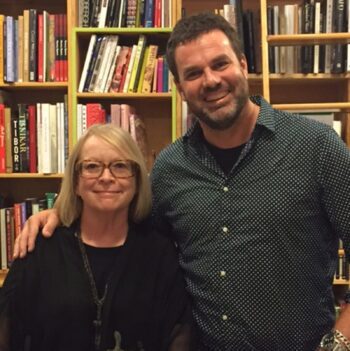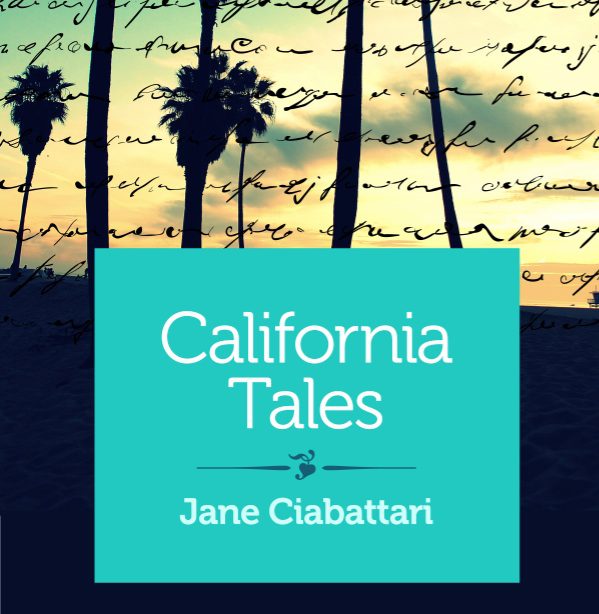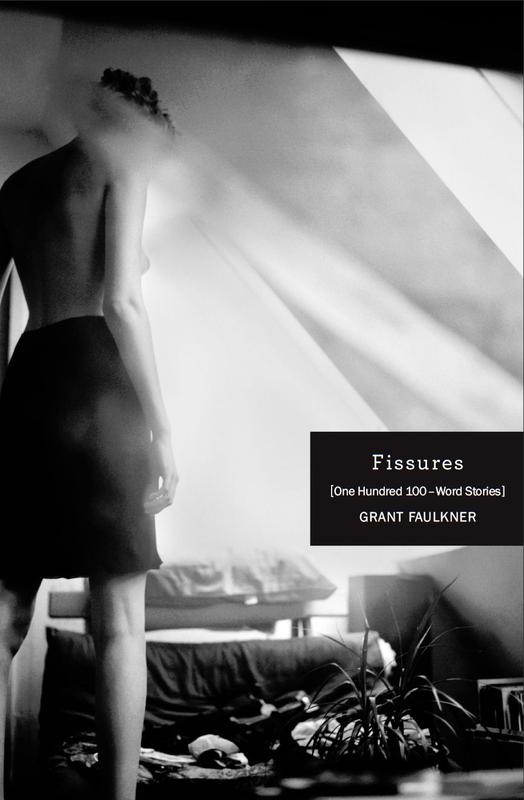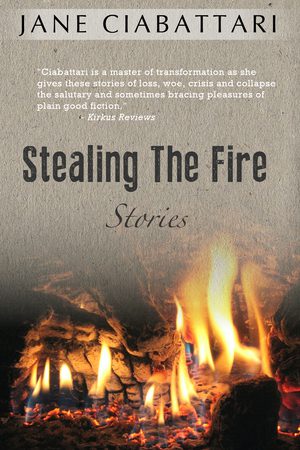
If you were to step into the deadline-driven lives of Jane Ciabattari, the fiction writer Kirkus Reviews has called a “master of transformation,” who contributes regularly to BBC Culture, NPR, and Lit Hub, and serves as Vice President/Online of the National Book Critics Circle, and Grant Faulkner, the fiction writer who heads National Novel Writing Month and co-founded 100 Word Story, you’d think they would have little time to work on their own writing, much less to collaborate.
But it turns out they’re both working on novels and experimenting with the emerging form of flash and they’re collaborators in [The Flash Fiction Collective], which hosts a flash reading series in San Francisco that’s featured such writers as Ianthe Brautigan, Diane Cook, Thaisa Frank, Michelle Richmond, Ethel Rohan, Joshua Tyree, and, most recently, Katrina Dodson, translator of Clarice Lispector. The Rumpus asked them to discuss of the varied short forms of flash fiction.
***
Jane Ciabattari: What is flash fiction?
Grant Faulkner: The conventional definition of flash is 1,000 words or less, although I’ve heard some define it as being less than 750 or 500 words. James Thomas, who coined the term flash fiction, defined flash as a story that will fit on a single two-page spread in a journal.
I’ve begun to think of flash fiction as something beyond word count, though. It’s really an aesthetic to me, a style of writing that emphasizes what’s left out, what’s unsaid. Flash stories are built through gaps as much as the connective tissue of words. They end, as Jayne Anne Philips said, in a breath that takes the reader in and beyond the story. So I believe one can essentially write a novel in flash, through fragments that move the story mainly by implication and elliptical connections, such as Jenny Offil’s Department of Speculation. We’re all a collection of tiny, disconnected stories in the end.
What about you? How do you define flash?
 Ciabattari: Not a novel. No, seriously. I think of flash as bursts of illumination, some less than a page long, that evoke shock, wonder, laughter, joy, all with a tantalizing sense of completion.
Ciabattari: Not a novel. No, seriously. I think of flash as bursts of illumination, some less than a page long, that evoke shock, wonder, laughter, joy, all with a tantalizing sense of completion.
Flash is a form perfected by writers like Evan Connell, whose brilliant novels Mr. Bridge and Mrs. Bridge are composed of interlocking but separate flash sections. (So is one of my contemporary favorites, Luis Jaramillo’s The Doctor’s Wife.) And Kafka. Clarice Lispector. Czeslaw Milosz, who captures what he writes of as “the immensity of existing things” in flash stories.
I like J. Robert Lennon’s definition, when launching his weekly online flash journal Okey Panky, which is devoted to “brevity, brevity, eccentricity, and dark humor. Or, put another way: A virtuoso tambourinist. A left on red. Your hot French-Canadian cousin. Serious Putty.” Flash invites us to be ironic, experimental, darkly comic.
Or, as Robert Olen Butler put it in his introduction to the The Best Small Fictions 2015, “We listen to small fictions like night sounds from afar. They enter us briefly, in sweetness and sassiness, in hilarity or aching sadness, but they leave us imprinted with freshly experienced truth.”
Flash is a global form (take a look at the writers gathered in Norton’s new International Flash Fiction Anthology, edited by James Thomas, Robert Shepard, and Christopher Merrill, who go as far back as Petronius and include West Coast writers Sherman Alexie, Ron Carlson, Meg Pokrass, Ethel Rohan, and Robert Scotellaro).
In the best writerly hands, flash works at six words. Like this, from Alexie: “My ex-wife. My brother. They eloped.” And Joyce Carol Oates: “Revenge is living well, without you.”
But for you, the sweet spot seems to be 100 words. What lured you into that subset of flash?
Faulkner: I discovered 100-word stories randomly. My friend Paul Strohm wrote a collection of one hundred 100-word stories, Sportin’ Jack, as a memoir. I thought that was the perfect form for a memoir, so I decided to try my hand at them, mainly for fun, but also because I’d been working on a novel for years and just wanted to have the satisfaction of finishing a story (a wonderful side benefit of flash).
I had no expectation that I’d become obsessed by such miniatures, or start an entire journal, 100 Word Story, dedicated to them, but I recognized that a different type of creativity emerges with a hard compositional limit.
Such a limitation allows for a type of drama that might not make it into a conventional short story or novel. Nathalie Sarraute, who wrote Tropisms, said it well. She describes her tropisms as the “interior movements that precede and prepare our words and actions, at the limits of our consciousness.” They happen in an instant, and apprehending them in the rush of human interactions demands painstaking attention.
This is the way I view many of my 100-word stories. They’re tiny yet deeply interior moments that reside in spectral spaces. They’re narrative haikus, so they allow me to channel a poetic side of myself that longer works tend not to invite in as much.
What about you. What drew you to writing flash?
Ciabattari: I started writing flash after publishing two story collections and then working on early drafts and revising a complicated novel that deals with issues of race, class, history (the underground railroad, the failures of Reconstruction), family, prison. As I found myself researching, writing, cutting, researching more, writing more, cutting more, I was increasingly frustrated at having no sense of completion. Each draft led to the next draft. (I’m still working on it.)
Writing flash is, by contrast, refreshing! I turn often for subject matter to my new environment. I left the Upper West Side for rural Sonoma county not long ago, and although I still spend a lot of time in New York, I find myself bemused and disoriented by this new culture. With flash, I can write blurts of prose, mini monologues from comments overheard, quick intense responses to my new world, stories told quickly, like encounters on the run.
I’ve used images, or lists of words as writing prompts—our [Flash Fiction Collective] co-founder Meg Pokrass is a master of that. I have lots of other flash projects going, including a novella-in-flash. For that, I have written flash sections called “Blight,” “Pests,” “Swarm” and “Acacia,” which connects with Ursula Le Guin’s “The Author of the Acacia Seeds and Other Extracts from the Journal of the Association of Therolinguistics.” And lines like this: “Parrots: Cheep cheep, screaming from an empty sky.” There is a wacky joy in this work.
 Faulkner: How has writing flash informed your novel? Or vice versa?
Faulkner: How has writing flash informed your novel? Or vice versa?
Ciabattari: When scenes in the novel are dragging, I can assign myself a specific flash challenge to fill in texture and emotion. That’s how a flash story called “Over,” which you ended up publishing in 100 Word Story, came to be. I fleshed it out some for the scene in the novel, but the emotional punch is still there. Flash also helps when I want to describe someone or something in detail in the novel; I give myself a 100-word assignment.
Faulkner: I often do the same thing. I love writing my novel through the lens of flash. In fact, it’s an interesting irony how the short form now informs the long form for me. I think of Hemingway’s famous iceberg dictum, to show only 10% of a story, just as icebergs remain largely invisible under water. It’s easy to say such a thing, but difficult to execute. When I used to take writing workshops, the most popular refrain was, “Tell me more.” More description. More backstory. More characterization. I don’t think anyone said, “Tell me less.”
Now I focus on telling less, and I think my stories, no matter their length, are richer, more suspenseful, and more thought provoking, as a result.
Ciabattari: Your new book Fissures has one hundred 100-word stories. How did you narrow down the stories and structure the book?
Faulkner: It was challenging to order so many stories—so much more difficult than putting together a conventional collection of short stories. At first, I considered just tossing all of the stories into the air and simply ordering them randomly, but I carefully grouped pieces that spoke to each other thematically, and then tried to modulate the tone of stories throughout.
I also created some throughlines. I have a series of stories about two tragic lovers, Gerard and Celeste, which I wove in from beginning to end to provide a guiding trajectory for the collection. Many readers responded to the Gerard and Celeste stories, so my latest novel is actually a one-sided epistolary novel of unsent letters written by Gerard to Celeste.
I’ve now met several authors who have published 100-word collections. Flash suddenly seems to be downright trendy, in fact. What’s your theory for this?
Ciabattari: The digital revolution has changed how we think, how we write, how we read. We’re distracted by the ongoing streams of social media. We’re overworked. We have too little time to write.
Brevity works. (I’m a fan of Dinty Moore’s Brevity, a journal devoted to concise literary nonfiction, or the “extremely brief (750 words or less) essay form,” that recently published its fiftieth issue.) Flash captures tone quickly. And so many literary writers are experimenting with the form—Rick Moody, Jennifer Egan, Teju Cole, David Mitchell, and others. I can feel the influence in my own work—my writing has become condensed, distilled, sharper. And you?
Faulkner: I completely agree. In fact, we started 100 Word Story for these very reasons. In this world of more—more emails, more social media, etc.—people’s reading styles have changed. People scan and read in nuggets, and online platforms are largely designed for that type of storytelling. We decided that 100 words was the perfect length of story to read online because 100 words is essentially a Facebook post.
That said, I love reading flash on the page, and I like to think about how its constraints change the nature of storytelling. For example, there’s the old question about the blurry lines between flash and prose poetry. People love obsessing about this. What’s your take? Is it a worthy conversation? Do short shorts need to have a conventional story structure, a beginning, middle, and end?
 Ciabattari: The simplest answer? “Remove the line breaks,” as Beast Crawl founder and poet Paul Corman-Roberts puts it. I don’t think beginning, middle, and end is the point. It’s the flavor, the effect, the lasting impression. The electrical impulse you transmit with the exact words. Like lightning. Flash.
Ciabattari: The simplest answer? “Remove the line breaks,” as Beast Crawl founder and poet Paul Corman-Roberts puts it. I don’t think beginning, middle, and end is the point. It’s the flavor, the effect, the lasting impression. The electrical impulse you transmit with the exact words. Like lightning. Flash.
Faulkner: I agree. If the author calls it a prose poem, it’s a prose poem. If the author calls it a flash, it’s a flash.
Do you think writing and reading flash has changed the way you see life in any way?
Ciabattari: Yes. In weird ways. I was in the West Village recently, with an hour to spare, and sat over coffee in a café. Ordinarily I might have been reading. But instead I pulled out a pen and grabbed a flyer nearby and started writing on the back of it, and within that hour I had a draft that surprised me. I had no intention of writing about the subject I chose. Convergence of time, place, and a bit of information—I’d just walked past a recording studio founded by Jimi Hendrix and still active today, didn’t realize I was going to write about it. I wrote another flash story on the subway (I got a seat for once). Something about the sparks that fly when the train comes down the tracks, and Siri on my iPhone converged. Flash pulls out the sensual, the painful, the joyous, the whimsical. It makes writing new work possible when I’m overwhelmed with deadlines.
Faulkner: I love when the lightning of flash strikes in such odd, stray moments. Someone should write an entire book of flash while sitting on a subway. I’ve written many a short piece in between innings of my son’s baseball games, or in the fifteen minutes I have before going to work.
I used to try to see the world in sweeping narrative arcs, one thing leading to the next with tension and trajectory, but my immersion in flash has changed that. I think our memories work largely in disconnected snapshots that spin through our minds like a slide show. Random, revolving images form the texture of my memories and thoughts, and flash helps me capture them.
I now think of life as more of a collage than a rising arc. The flash aesthetic is the best way for me to make collages of stories. I can create a mosaic with all of life’s shards and gems.
Ciabattari: Yes. Fragments, with that electrical something. Flash feels alive, evolving.




